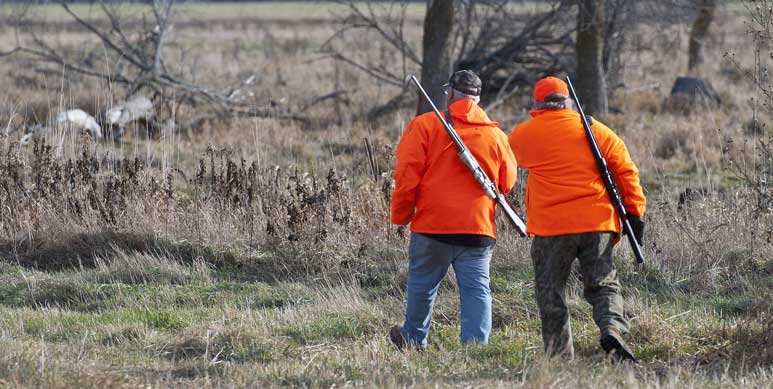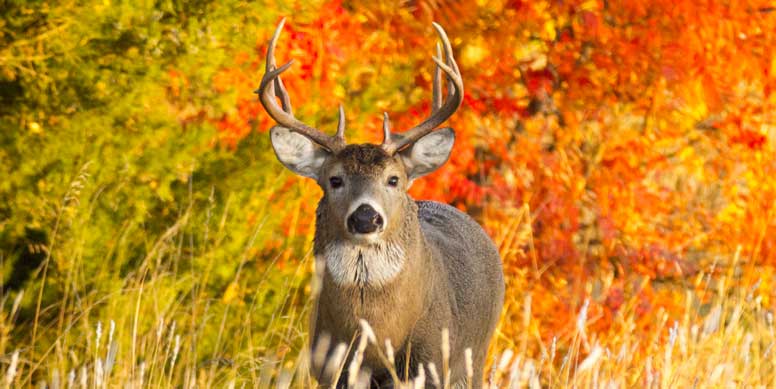Residents and nonresidents can participate in the hunts from Saturday, Dec. 26, through Sunday, Dec. 27, and Saturday, Jan. 2, through Sunday, Jan 3, in deer permit area 343, the entire southeast management zone (deer permit areas 643, 645, 646, 647, 648, 649, 655) and the south metro management zone (deer permit area 605).
“Special hunts are an important tool in disease management, allowing us to focus on specific areas where disease has been detected and reduce deer densities in targeted areas,” said Barbara Keller, big game program leader.
All hunters, including archers, who harvest deer in these deer permit areas during the special hunts must submit a sample from any harvested deer to a self-service sampling station for disease testing. In other 2020 deer hunting seasons, hunters in designated areas were strongly encouraged, but not required, to submit samples.
Not only do the special hunts help limit disease spread, they show where disease is more prevalent through hunter-harvested samples tested for CWD, Keller said. This helps the DNR determine where to focus management actions to help keep the deer herd healthy.
The special hunt areas were determined from disease detections from this fall’s hunting season and previous hunting seasons in southeastern Minnesota. Additional information about disease prevalence is needed through disease testing from these special hunts.
These hunts are part of the DNR’s three-pronged CWD management approach. Because the disease is spread through direct contact with an infected deer’s saliva, urine, blood, feces, antler velvet or carcass, reducing deer numbers in localized areas helps lower deer densities – the number of deer per square mile – and remove CWD-positive animals. The DNR also implements deer feeding and attractant bans to reduce the human-facilitated contact between deer, and restricts how hunters are allowed to move deer they harvest.
Hunt Information
Hunters must plan ahead and check the special hunts webpage for complete details about the special hunts, including hunt rules; registration options; CWD sampling station, quartering sites and dumpster locations; carcass movement restrictions, a map of the hunt area; and information about the DNR’s efforts to keep Minnesota wild deer healthy.
Hunters are required to drop off the head of any harvested deer at a self-service sampling station in their disease management zone. (Alternate sampling options are available for deer hunters who want to keep the antlers of their deer. See the special hunts webpage for details.)
The stations will be unstaffed in order to facilitate social distancing during the COVID-19 pandemic. Hunters should be mindful to follow precautions to help prevent the spread of COVID-19 while hunting and at the stations, including staying home if feeling sick, keeping a 6-foot distance from others and wearing a mask. To ensure safety of fellow hunters, please be patient at stations to accommodate these safety measures. Hunters who have not used these sampling stations before are encouraged to look at DNR resources in advance.
Mandatory carcass movement restrictions remain in effect throughout these special hunts. Whole carcasses cannot leave a management or control zone until a “not detected” CWD test result is received after providing a sample. Successful hunters may de-bone or quarter their deer to transport their harvest without brain and spinal column material.
Other key information for these special hunts:
- Hunters must have a valid hunting license and use the appropriate weapon that matches the license to use any unfilled permits from 2020 deer hunting seasons. A disease management permit can also serve as a standalone license.
- Hunters may purchase an unlimited number of disease management permits. During special hunts, these permits are valid on deer of either sex.
- Archery hunters participating in the archery season that continues during the special hunts must submit samples for any deer harvested in the permit areas open for the special hunts.
- Private land makes up most of the area within the hunt area and hunters must have landowner permission to hunt that land.
- Some state parks, state scientific and natural areas, and federal lands will be open to hunting, with some exceptions or permit requirements. Please visit the special hunts webpage for information.
Additional CWD Information
Keeping Minnesota’s wild deer population healthy remains the goal in the DNR’s response to chronic wasting disease. Since CWD was first detected in Minnesota in 2002, the DNR has tested more than 90,000 wild deer in the state. To date, 104 wild deer have tested positive for CWD in Minnesota. CWD test results, including locations of confirmed positive test results and statistics, are available on the DNR website at mndnr.gov/cwdcheck.
As part of its CWD response plan, the DNR is monitoring for CWD in disease management zones around areas where the disease has been detected in wild deer, as well as in surveillance areas where CWD was found in captive deer. The CWD management zones are located in the southeast, north-central and south metro areas of Minnesota; the CWD surveillance areas are located in the east-central, west-central and south metro areas of Minnesota.
CWD affects the cervid family, which includes deer, elk and moose. There is no vaccine or treatment for this disease.
For more information on chronic wasting disease, including maps of CWD surveillance areas, frequently asked questions and hunter information, visit mndnr.gov/cwd.











